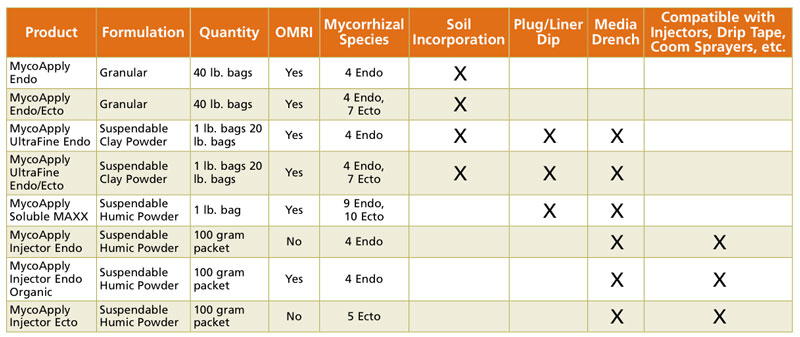1/1/2022
Mycorrhizae: What’s in a Name?
Rick Yates
Mycorrhizae means “fungus root,” which gives us a running start at understanding the function of these amazing organisms. Mycorrhizae are fungi that grow in a mutually beneficial relationship with plant roots. Plants provide carbon, lipids and sugar, while mycorrhizae respond with chelated inorganic nutrients, such as calcium, magnesium, nitrogen, phosphorus and zinc. The chelation process makes these nutrients more available to plants. The fungal connection occurs when the mycorrhizae receives a signal from the plant. Once this occurs, the spores germinate and the mycorrhizae send out hyphae to penetrate the plant roots.
Endo mycorrhizae fungi live inside and outside of the root, being dependent on the host plant to survive. This represents approximately 85% of all mycorrhizae. Ecto mycorrhizae is much less common, living outside the plant roots of mostly woody plant species. Ecto mycorrhizae can live without a plant host. Both types of mycorrhizae have multiples strains that may favor certain plant species or different stages of plant growth. This is why many commercial mycorrhizae products contain multiple strains. Most plants will respond to one or another strains; however, there’s a short list of species that are unresponsive to mycorrhizae that includes azaleas, blueberries, brassicas, dianthus, most orchids, rhododendrons and spinach.
So what does all of this mean for plants?
Benefits of mycorrhizae:
• Improved tolerance to drought, nutrient deficiencies, high soluble salts and transplant shock
• Improved flowering and lateral branching (roots and shoots)
• Reduced crop time and fertilizer requirements
• Improved shelf life and garden performance
Plants grown under stress will show the most noticeable plant responses. By improving overall plant heath and stress responses, mycorrhizae help plants to resist insect and disease pressure, even though there’s no direct pesticidal activity.
How does mycorrhizae work?
• The fungus is much smaller than roots, allowing penetration where roots cannot grow.
• By secreting organic acids that dissolve and chelate plant nutrients, the fungus makes them more available to the plant.
• The fungal roots can grow out much further than plant roots, expanding the absorptive area by up to 50 times.
Obviously, it takes some time for this symbiotic relationship to ramp up and create benefits for the plants. While it varies by species of mycorrhizae and plant host, benefits can begin as soon as four weeks after application and become more apparent after eight weeks.
Mycorrhizae can be applied in a variety of ways:
• Pre-incorporated into soilless media (some commercially available products exist)
• Seed treatments
• Plug or liner tray dips
• Granular media incorporation
• Soil drenches
Early applications of mycorrhizae allow for the fastest plant responses, along with reduced labor and material costs. Once mycorrhizae become established with the young plant, it grows along with the crop throughout its development.
Mycorrhizae is easy to work with:
• Two-year shelf life with no special storage requirements (this may vary by manufacturer)
• A fungicide compatibility list provides treatment options that won’t disrupt the mycorrhizae
• Compatible with BCAs and microbial fungicides
• No EPA registration or REIs required
• Many formulations are OMRI-listed

Rick Yates is a GGSPro Technical Services Manager for Griffin.